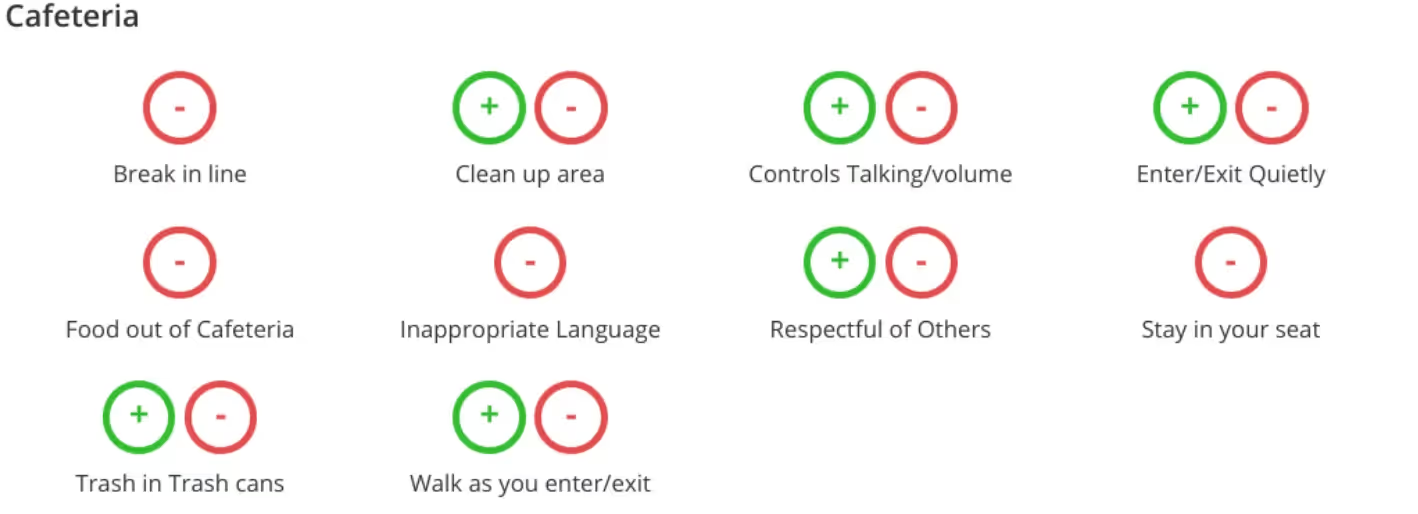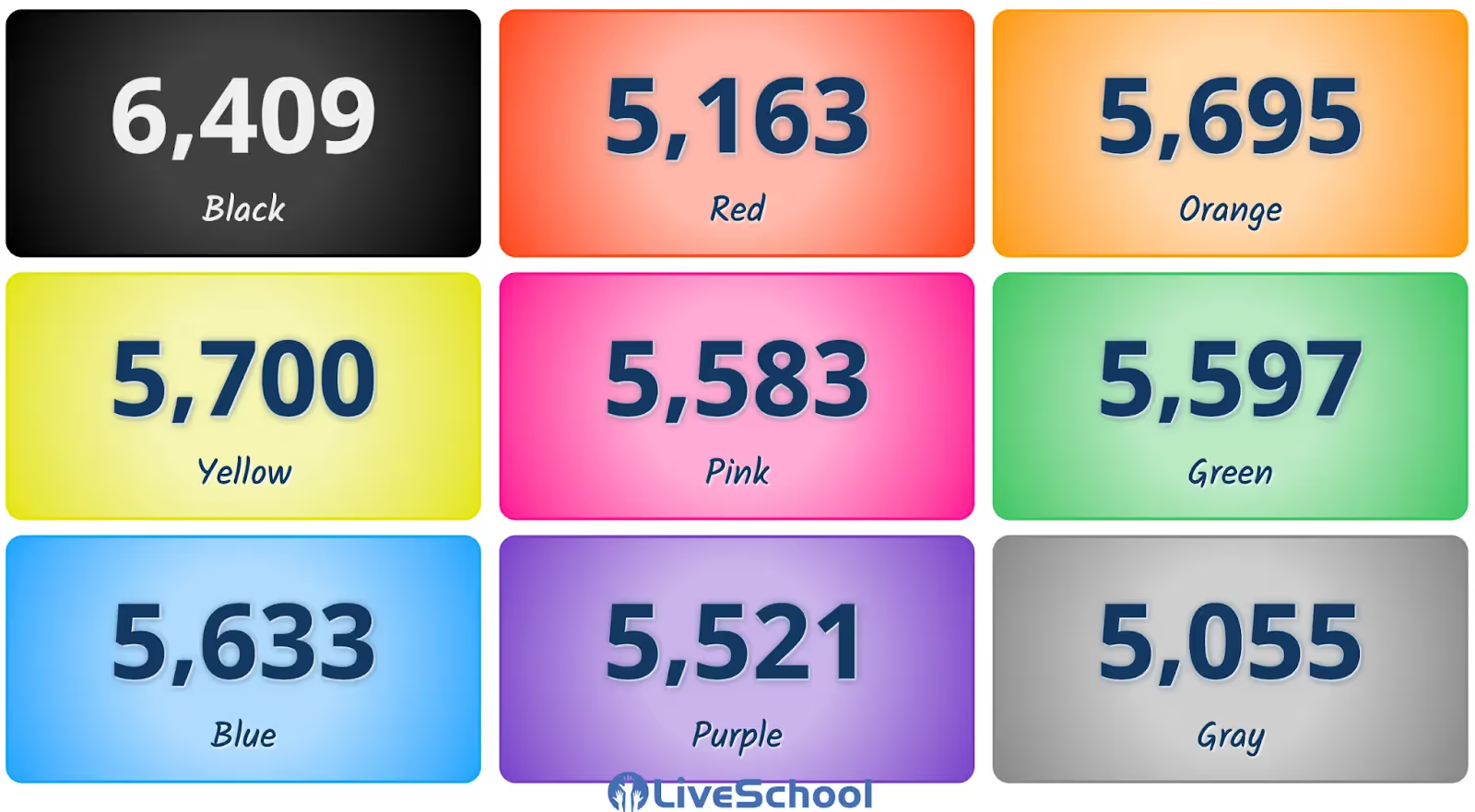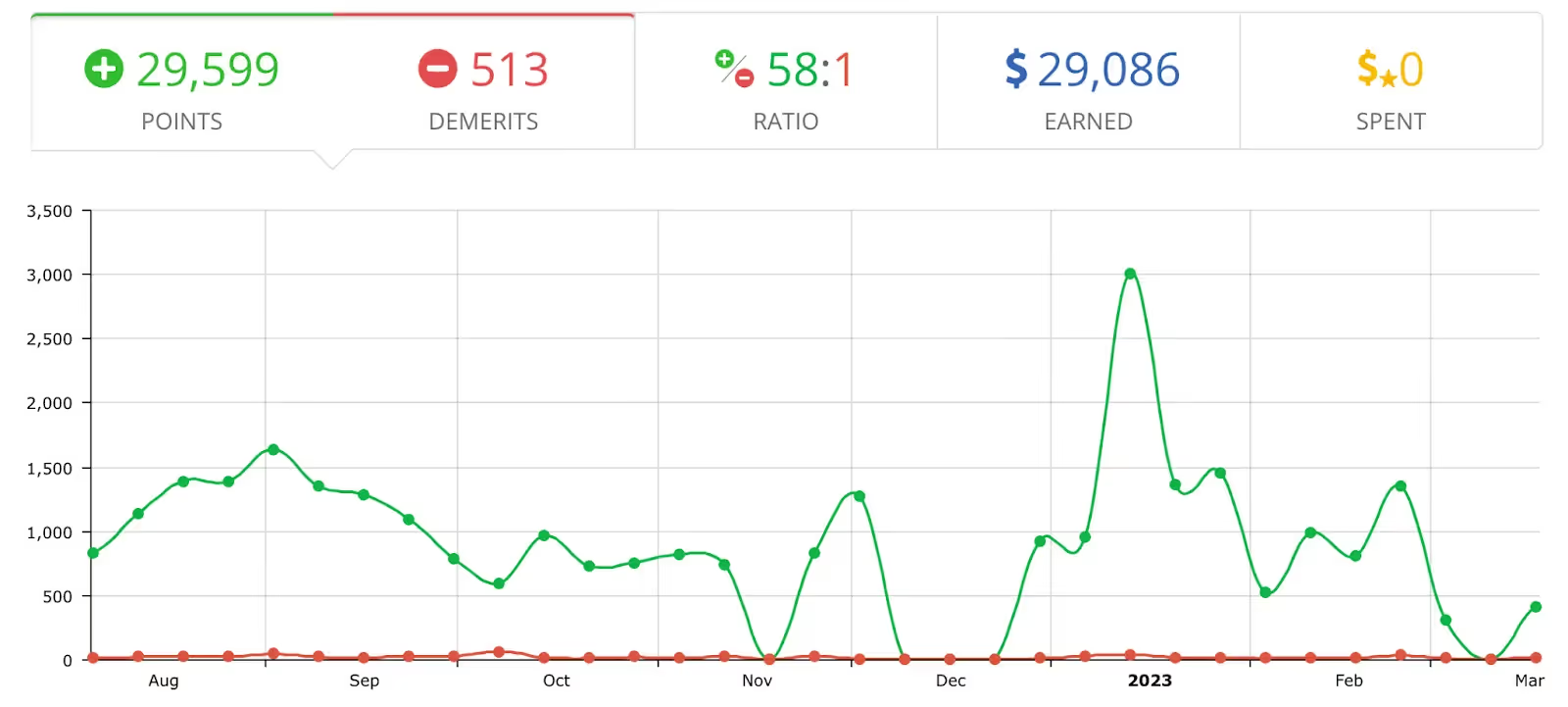
How Mary Quinn Wood and her team at Bowmar are using LiveSchool to track and reinforce positive behavior.


Track inventory in your school and classroom rewards stores, offer Amazon-style shopping to students, and more!
Launch a school-wide behavior and rewards system that's motivational for students and easy for teachers.
Create camaraderie and friendly competition with a school-wide House Points system. Join an interactive demo to learn more!

Track behavior, motivate students, and promote a positive culture – all in one easy platform.


Classroom management can be a challenge for even the best teachers. The most charismatic and gifted educators still need structures that can guide their work.
Positive Behavioral Interventions and Supports (PBIS) have become the go-to approach for creating a positive learning environment, but some teachers still struggle to fully implement it.
The staff at Bowmar Elementary is a great example of this. They were very well-versed in PBIS but they were using paper tickets and sticky-note reminders to track student behavior and found themselves bogged down by the administrative burden.
The strategy was sound. They identified targeted behaviors and were looking for positive actions to reinforce through tangible rewards, intangible incentives, as well as praise.
But the logistics were analog. No matter how well planned those steps were, they were still relying on scrap paper notes, post-it cards, and construction paper tickets to execute the plan.
That’s where Mary Quinn Wood and her colleagues at Bowmar Elementary found themselves, with great intentions, and a good plan, but without the necessary tools needed to succeed.
That’s why they took action. Their plan has resulted in a program that has awarded 486K positive behavior points this year, with an amazing 56 to 1 positive-to-negative ratio.
But it isn’t just about the points and rewards, they now have accurate and actionable data at their fingertips.
So how’d they do it?
Lorem ipsum dolor sit amet, consectetur adipiscing elit, sed do eiusmod tempor incididunt ut labore et dolore magna aliqua. Ut enim ad minim veniam, quis nostrud exercitation ullamco laboris nisi ut aliquip ex ea commodo consequat. Duis aute irure dolor in reprehenderit in voluptate velit esse cillum dolore eu fugiat nulla pariatur.
Block quote
Ordered list
Unordered list
Bold text
Emphasis
Superscript
Subscript

Track inventory in your school and classroom rewards stores, offer Amazon-style shopping to students, and more!
Launch a school-wide behavior and rewards system that's motivational for students and easy for teachers.
Create camaraderie and friendly competition with a school-wide House Points system. Join an interactive demo to learn more!

Track behavior, motivate students, and promote a positive culture – all in one easy platform.


Classroom management can be a challenge for even the best teachers. The most charismatic and gifted educators still need structures that can guide their work.
Positive Behavioral Interventions and Supports (PBIS) have become the go-to approach for creating a positive learning environment, but some teachers still struggle to fully implement it.
The staff at Bowmar Elementary is a great example of this. They were very well-versed in PBIS but they were using paper tickets and sticky-note reminders to track student behavior and found themselves bogged down by the administrative burden.
The strategy was sound. They identified targeted behaviors and were looking for positive actions to reinforce through tangible rewards, intangible incentives, as well as praise.
But the logistics were analog. No matter how well planned those steps were, they were still relying on scrap paper notes, post-it cards, and construction paper tickets to execute the plan.
That’s where Mary Quinn Wood and her colleagues at Bowmar Elementary found themselves, with great intentions, and a good plan, but without the necessary tools needed to succeed.
That’s why they took action. Their plan has resulted in a program that has awarded 486K positive behavior points this year, with an amazing 56 to 1 positive-to-negative ratio.
But it isn’t just about the points and rewards, they now have accurate and actionable data at their fingertips.
So how’d they do it?
I was always strong with PBIS but I struggled to assess my data which is why LiveSchool has been a real game changer for me and my classroom management.
First, let’s introduce you to Mary Quinn Wood and dig into how she and her colleagues at Bowmar have separated themselves from other schools. Mary has been teaching at Bowmar for 7 years and her positive approach has been recognized as an asset to her school.
Mary Quinn has been a part of her school's PBIS and Culture Committee, and she was named the 2022-2023 Teacher of the Year.
If anyone understands the importance of positive reinforcement and school culture…it’s Mary.
But like the rest of us, she found that student behavior had become a real challenge as we transitioned back into schools after the pandemic. Student engagement was low, disruptive behavior was on the rise, and this was making teaching content and engaging her students nearly impossible.
Mary and her team were trying to reinforce positive behaviors on their own using traditional methods, with mixed results. They would identify a problem and incentivize their students to meet the expectation in order to address the issue.
Think post-it note reminders on “what to look for” and reward stickers to reinforce positive behaviors.
This was really difficult to track and the frequency of behavior concerns made it difficult to implement the strategy with any sort of consistency.
That’s why the PBIS team and the administration decided to go digital. They implemented LiveSchool to reward points for positive behavior, collect accurate data on negative behavior, and establish a reward system that could be implemented with consistency throughout the building.
But before they could reap the rewards of all that consistency they had to create a behavior rubric that was not only age-appropriate but also that fit the specific needs of their students.
The goal of your expectations should be to focus on the behaviors you want to see more of in your school. Or better yet, the behaviors that lead to success in your school.
For Bowmar that meant following a 3-step process:
The team at Bowmar identified these areas:



Mary and her colleagues knew that for this plan to work, they would need to blend their own practices with the school-wide plan.
This meant creating a flexible classroom rubric that could be applied in all classrooms while still giving teachers the independence to apply the rubric according to their own classroom management styles.
For Mary’s 6th grade classroom, this meant:

Now that the team had a method to digitally track behaviors and norms set around teacher usage they needed to ensure that students would be motivated by the points they had worked so hard to establish.
To make this more effective Mary and her team grouped students into “Houses”. This meant that any point a student earned would also be added to the team that the student belonged to. This was critical as it added a layer of camaraderie, competition, and personal responsibility to the system.
It was also done easily as LiveSchool automatically selected groups and provided the scoreboard to track them using House Points.

Bowmar also established 3 school-wide rewards that would create the necessary incentives to make the program a success.

Data collection and analysis can be a powerful tool for teachers in understanding and responding to student behavior. Through data collection, Mary now has insights into how her students are engaging with the material and she can identify her student’s strengths.

This data can be used to inform instruction, such as providing targeted interventions for struggling students or reinforcing concepts for those who are excelling.

By analyzing data, Mary and her colleagues can accurately identify patterns of behavior, such as disruptive or disengaged behavior, and can address these issues more effectively. She also now has accurate data to self-assess her own practices regarding discipline and engagement.

It is important to note that the system adopted at Bowmar is strengthened through parent communication in the form of LiveSchool Weekly Recaps.
“98% of our families have set up accounts to receive updates on their students in LiveSchool.”
Communication is essential for teachers and parents to work together to create a safe and supportive environment for children to learn, grow, and develop.
Through positive reinforcement, clear expectations, and consistent consequences, staff can help students understand and practice behavior that will lead them to academic success.
Parents play an essential role in monitoring and reinforcing the lessons their children are learning in the classroom. By digitizing its behavior process, Bowmar has created a culture of communication and consistency that all of its stakeholders can leverage to support student success.

Track inventory in your school and classroom rewards stores, offer Amazon-style shopping to students, and more!
Launch a school-wide behavior and rewards system that's motivational for students and easy for teachers.
Create camaraderie and friendly competition with a school-wide House Points system. Join an interactive demo to learn more!

Track behavior, motivate students, and promote a positive culture – all in one easy platform.


Classroom management can be a challenge for even the best teachers. The most charismatic and gifted educators still need structures that can guide their work.
Positive Behavioral Interventions and Supports (PBIS) have become the go-to approach for creating a positive learning environment, but some teachers still struggle to fully implement it.
The staff at Bowmar Elementary is a great example of this. They were very well-versed in PBIS but they were using paper tickets and sticky-note reminders to track student behavior and found themselves bogged down by the administrative burden.
The strategy was sound. They identified targeted behaviors and were looking for positive actions to reinforce through tangible rewards, intangible incentives, as well as praise.
But the logistics were analog. No matter how well planned those steps were, they were still relying on scrap paper notes, post-it cards, and construction paper tickets to execute the plan.
That’s where Mary Quinn Wood and her colleagues at Bowmar Elementary found themselves, with great intentions, and a good plan, but without the necessary tools needed to succeed.
That’s why they took action. Their plan has resulted in a program that has awarded 486K positive behavior points this year, with an amazing 56 to 1 positive-to-negative ratio.
But it isn’t just about the points and rewards, they now have accurate and actionable data at their fingertips.
So how’d they do it?
Classroom management can be a challenge for even the best teachers. The most charismatic and gifted educators still need structures that can guide their work.
Positive Behavioral Interventions and Supports (PBIS) have become the go-to approach for creating a positive learning environment, but some teachers still struggle to fully implement it.
The staff at Bowmar Elementary is a great example of this. They were very well-versed in PBIS but they were using paper tickets and sticky-note reminders to track student behavior and found themselves bogged down by the administrative burden.
The strategy was sound. They identified targeted behaviors and were looking for positive actions to reinforce through tangible rewards, intangible incentives, as well as praise.
But the logistics were analog. No matter how well planned those steps were, they were still relying on scrap paper notes, post-it cards, and construction paper tickets to execute the plan.
That’s where Mary Quinn Wood and her colleagues at Bowmar Elementary found themselves, with great intentions, and a good plan, but without the necessary tools needed to succeed.
That’s why they took action. Their plan has resulted in a program that has awarded 486K positive behavior points this year, with an amazing 56 to 1 positive-to-negative ratio.
But it isn’t just about the points and rewards, they now have accurate and actionable data at their fingertips.
So how’d they do it?
You know what they teamwork makes the dream work. These articles have been written by the wonderful members of our team.

Track inventory in your school and classroom rewards stores, offer Amazon-style shopping to students, and more!
Launch a school-wide behavior and rewards system that's motivational for students and easy for teachers.
Create camaraderie and friendly competition with a school-wide House Points system. Join an interactive demo to learn more!

Track behavior, motivate students, and promote a positive culture – all in one easy platform.


Classroom management can be a challenge for even the best teachers. The most charismatic and gifted educators still need structures that can guide their work.
Positive Behavioral Interventions and Supports (PBIS) have become the go-to approach for creating a positive learning environment, but some teachers still struggle to fully implement it.
The staff at Bowmar Elementary is a great example of this. They were very well-versed in PBIS but they were using paper tickets and sticky-note reminders to track student behavior and found themselves bogged down by the administrative burden.
The strategy was sound. They identified targeted behaviors and were looking for positive actions to reinforce through tangible rewards, intangible incentives, as well as praise.
But the logistics were analog. No matter how well planned those steps were, they were still relying on scrap paper notes, post-it cards, and construction paper tickets to execute the plan.
That’s where Mary Quinn Wood and her colleagues at Bowmar Elementary found themselves, with great intentions, and a good plan, but without the necessary tools needed to succeed.
That’s why they took action. Their plan has resulted in a program that has awarded 486K positive behavior points this year, with an amazing 56 to 1 positive-to-negative ratio.
But it isn’t just about the points and rewards, they now have accurate and actionable data at their fingertips.
So how’d they do it?

Track inventory in your school and classroom rewards stores, offer Amazon-style shopping to students, and more!
Launch a school-wide behavior and rewards system that's motivational for students and easy for teachers.
Create camaraderie and friendly competition with a school-wide House Points system. Join an interactive demo to learn more!

Track behavior, motivate students, and promote a positive culture – all in one easy platform.


Classroom management can be a challenge for even the best teachers. The most charismatic and gifted educators still need structures that can guide their work.
Positive Behavioral Interventions and Supports (PBIS) have become the go-to approach for creating a positive learning environment, but some teachers still struggle to fully implement it.
The staff at Bowmar Elementary is a great example of this. They were very well-versed in PBIS but they were using paper tickets and sticky-note reminders to track student behavior and found themselves bogged down by the administrative burden.
The strategy was sound. They identified targeted behaviors and were looking for positive actions to reinforce through tangible rewards, intangible incentives, as well as praise.
But the logistics were analog. No matter how well planned those steps were, they were still relying on scrap paper notes, post-it cards, and construction paper tickets to execute the plan.
That’s where Mary Quinn Wood and her colleagues at Bowmar Elementary found themselves, with great intentions, and a good plan, but without the necessary tools needed to succeed.
That’s why they took action. Their plan has resulted in a program that has awarded 486K positive behavior points this year, with an amazing 56 to 1 positive-to-negative ratio.
But it isn’t just about the points and rewards, they now have accurate and actionable data at their fingertips.
So how’d they do it?